Paper Plate people, hotdogs and drug paraphernalia. These are some of Andrew Guenther’s subject matter. Referenced from his own life and pop culture, his work is highly personal even though it may seem even the slightest bit anonymous. Guenther’s unique aesthetic sensibility combined with vibrant colored drawings and paintings, immediately grab the viewer. His silver gelatin photographs look like they could have been taken decades ago. His latest sculptures of fish and naked ladies accompanied by a photograph of the full moon seem pure and earthly.
Andrew Guenther is based in Brooklyn and was born and raised in Wheaton, Illinois. Andrew has exhibited widely both in the US and abroad, and curated an artist’s storefront space in Brooklyn for a few years called Arts Tropical. He is represented by Freight and Volume Gallery in New York.
Carissa Pelleteri: Your art seems to be inspired by your everyday life and surrounding objects. What do you do regularly that inspires you, which is manifested into your work?
Andrew Guenther: I do a lot of things regularly—my schedule is pretty predictable and my likes and dislikes are very idiosyncratic. I don’t think any of these things manifest themselves in my work. I walk a lot. Walking is where I do most of my thinking and I’m alone with my thoughts. I guess it’s this byproduct of walking that translates most often into my work. Since I don’t write things down on the walk, the only things that fall into my art practice are the things that stick.
CP: While some of your work may be viewed as humorous and wacky, it also holds a kind of pure, raw sexual energy…and some escapism. Hotdogs, Plate Faces with women’s bare chests…American Medicine. What are you saying to us?
AG: It’s interesting that you picked up on the escapism. One’s own thoughts can be both visionary and toxic. I make my work for myself, first, and I’ve always felt like an outsider watching things develop around me. I still take responsibility for my actions and thoughts but I think a lot of my own mental energy is tied to the greater public consciousness and that is when people can relate at some level to what I am doing.
For me, “American Medicine” suggest everything that is right and everything that it wrong. Medicine is supposed to relieve or cure illness. It can also damage parts of the body while working on another. “American Medicine” is apple pie, macaroni and cheese, baseball bats, rock music, anything bought or sold, water in plastic bottles, meth, illegal firearms, foreign policy etc. I think “American Medicine” is the title of an unwritten poem that crept it’s way into a few artworks that I did.
CP: How did “Hotdog Nap” and “Cork with a whisker” come about?
AG: I work very intuitively. “Hotdog Nap”—saw the light, had the sausage, and set up the tripod. “Cork with a Whisker” came out of a family conversation at the kitchen table. I found a whisker near the window where the cat suns herself and there was a champagne cork rolling on the table. We were talking about street vendors hawking products in the city and I put the two items together as a joke, exclaiming “get your cork with a whisker here!” The object became very special to me as something that should never exist. I’ve been collecting the whiskers for about three years now and have about 12 different sculptures.
CP: In the drawing: “The Painter” this character has a face. When did you decide to stop creating faces of physical beings in your work? Why was the plate face born?
AG: I still make drawings of the figure in “The Painter” but he is really skeletal and cartoon-ish with his bulging eyes and flailing tongue. He’s this over-sensitive drug addled investment banker that takes long lunches in the park to stare at women or smoke DMT in the bushes.
But you are right—I have stopped working with the face of the figure because I don’t want to conjure the spirit of someone I don’t know. I’m superstitious like that. I don’t draw from photographs or use friends in the work anymore, in particular, because I believe that the rendering of a face carries a spirit of an individual whether invented or from reproduction. I don’t want to fill up my studio with this spirit energy–I don’t know if the conjured entity is good or bad. It sounds kind of foolish but when you are sitting in front of a painting and you have drawn this face staring back at you in convincing detail, you know that that person exists or has existed somewhere. The plate faces give me this blank, unaffected and childish playfulness, so that I can focus on composition.
CP: The vibrant color scheme in your paintings, drawing and sculpture work is fantastic. The inspiration and execution in your photographs is played out a bit differently. Why photograph in black & white and not in color?
AG: I feel that I am able to use photography in trade for some things I used to do in painting. I like to keep the paintings uncluttered with cultural references and black and white seems to have a documentary aspect to it—very to the point. I also like the relief of not having to decide how to depict specific objects or things. I could never paint the horse to get the same weight the photograph carries. I could have probably done a linear study in pen and paper of Hotdog Nap to achieve the joke layer, but I would have never shared that afternoon light pouring over the textured fabrics of the headboard and sheets. I also like the immediacy of the photograph despite the long process from camera to paper.
CP: Tell me about the plate face made in gold and silver leaf. (I love it). Your latest sculptures are in a simple, pure white base. Why the more minimal aesthetic versus the colorful work?
AG: I have been attempting different methods to work over the photographs in the studio for some time. The paper is difficult to work with in a lot of media. I like Araki’s take on using different media over the photograph, but even his end up as simple color splashes or stains. In working with photography I have also found the medium is most often approached very traditionally. Much like a ceramics studio where everyone is using these earth-tone glazes over things that look like pots. I always enjoy perversions of a medium—sort of like when I tried to get screaming active guitar pickups in a traditionally buttery sounding Les Paul.
CP: Can you tell me about your recent show in Japan?
AG: Japan was very exciting and overall the show was received very well. It was my first trip to Japan and I had all these ideas about the country beforehand. I think media and film had filled my head with a neurotic city with busy and frantic people. I found Tokyo and the vicinity to be one of the most relaxing places I have ever been. Returning to NYC, I found my appetite sickened by what I was eating before I left. There is a special level of care and quality put into food in Japan, presentation aside, that I would feel better after eating basashi [raw horse meat] rather than a slice of New York pizza. I could see myself living there for a few months of the year. In relation to my work, I feel that some of the humor was mis-interpreted or lost, but I think parts of it were appreciated in a different way—the more serious and poetic elements.
CP: What can we expect to see at your show at Kaycee Olsen Gallery in Los Angeles this coming May?
AG: Papier-mâché plate face lady reliefs, formal color paintings, and small photographs to carry out the narrative. I just found out today that papier-mâché is French for chewed paper . . . so I think it is perfect for the plate faces. I originally started to use papier-mâché because of its low environmental impact versus slabs of paint.
Artists site: guentherart.com

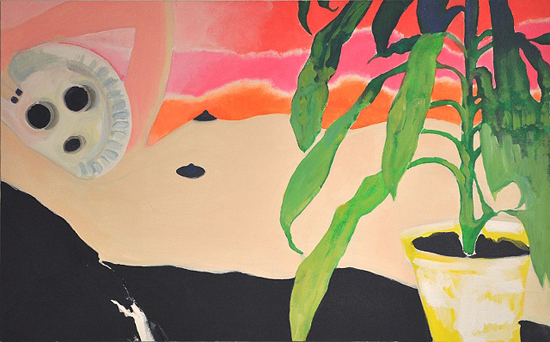

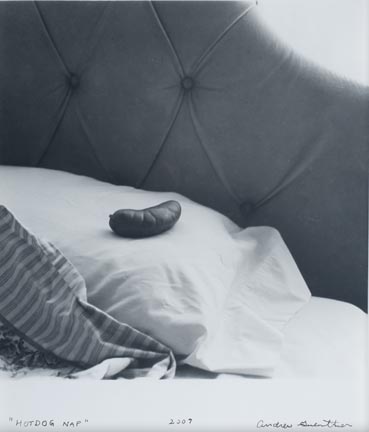

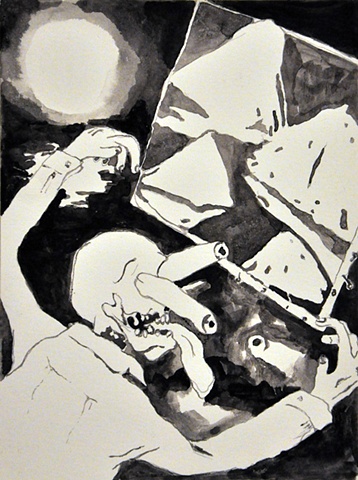

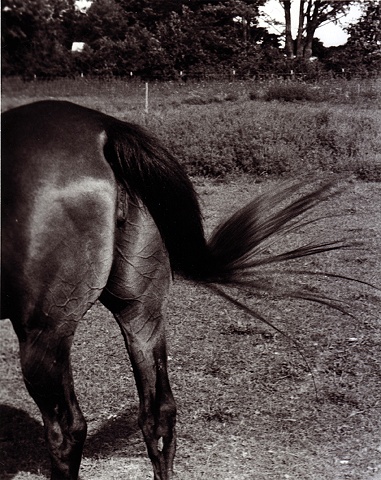

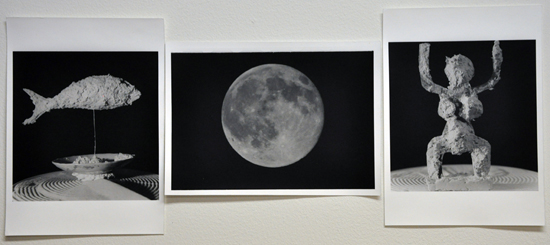

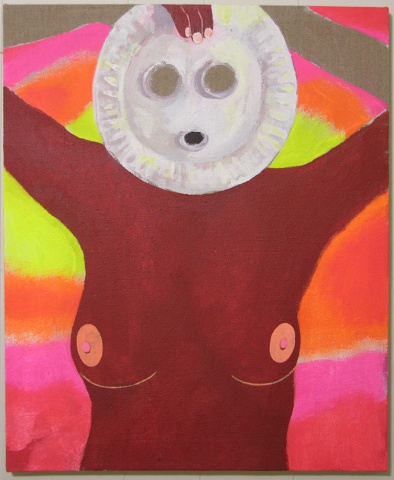
 RSS
RSS
